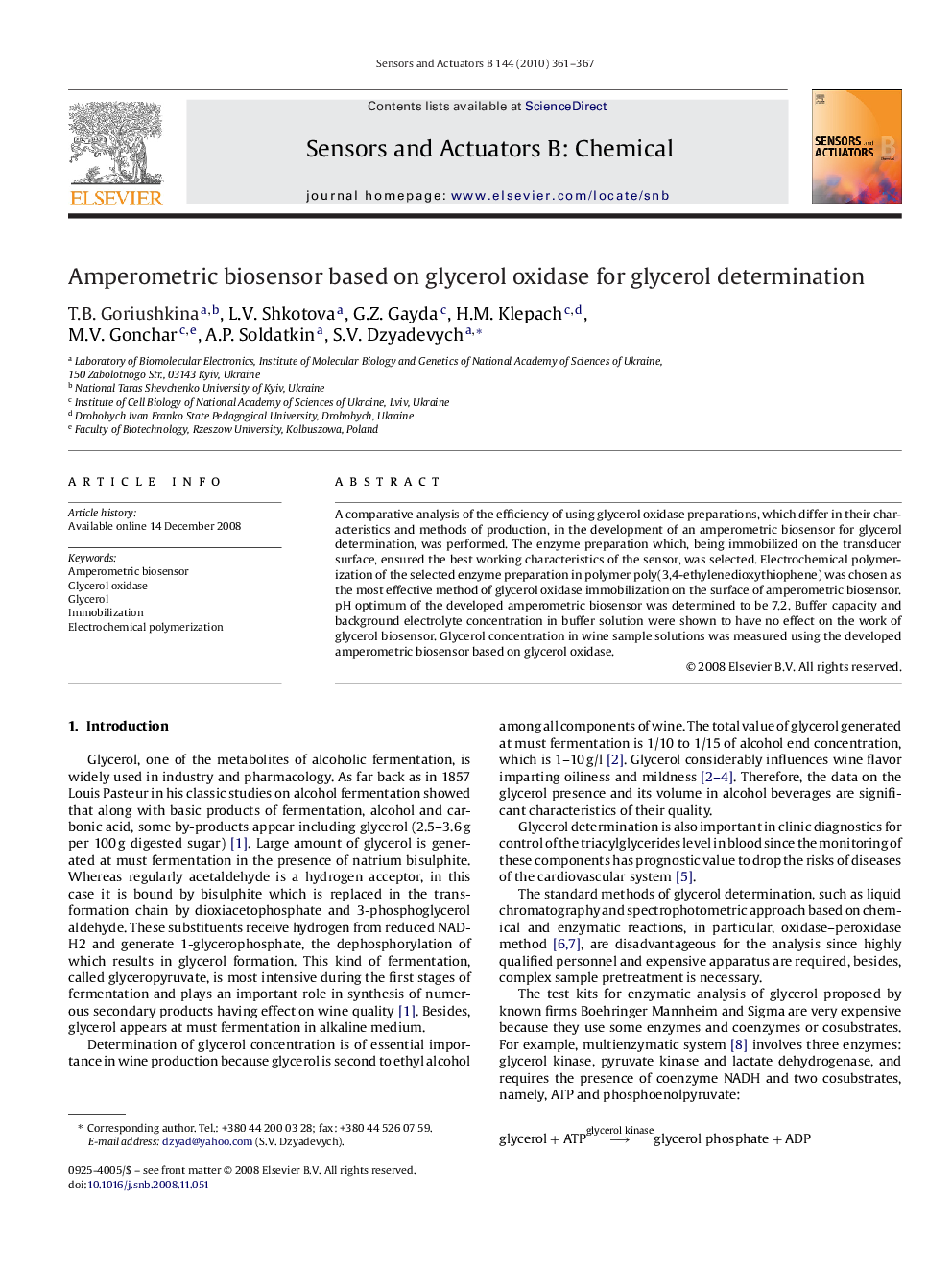| Article ID | Journal | Published Year | Pages | File Type |
|---|---|---|---|---|
| 744919 | Sensors and Actuators B: Chemical | 2010 | 7 Pages |
A comparative analysis of the efficiency of using glycerol oxidase preparations, which differ in their characteristics and methods of production, in the development of an amperometric biosensor for glycerol determination, was performed. The enzyme preparation which, being immobilized on the transducer surface, ensured the best working characteristics of the sensor, was selected. Electrochemical polymerization of the selected enzyme preparation in polymer poly(3,4-ethylenedioxythiophene) was chosen as the most effective method of glycerol oxidase immobilization on the surface of amperometric biosensor. pH optimum of the developed amperometric biosensor was determined to be 7.2. Buffer capacity and background electrolyte concentration in buffer solution were shown to have no effect on the work of glycerol biosensor. Glycerol concentration in wine sample solutions was measured using the developed amperometric biosensor based on glycerol oxidase.
